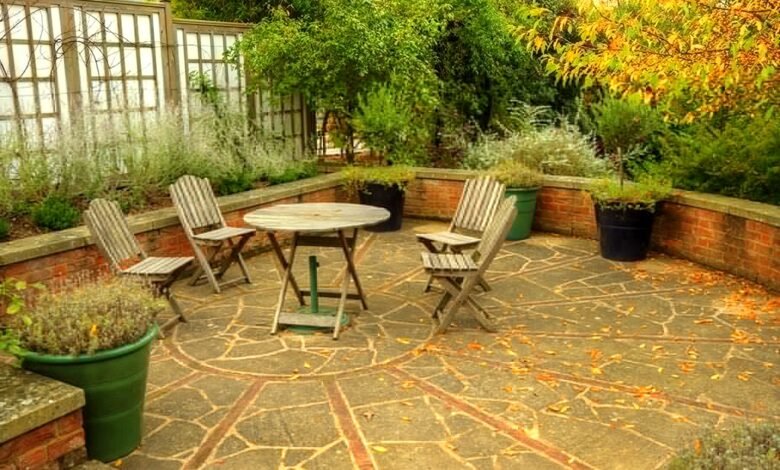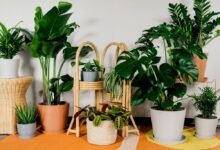Low-Maintenance Gardening: Best Plants for Busy Homeowners
This guide will walk you through the best plants for low-maintenance gardening and provide helpful tips for creating a stress-free garden sanctuary.

In today’s fast-paced world, not everyone has the time or energy to maintain a lush garden that demands constant care. That’s where low-maintenance gardening comes in. With the right choice of plants and smart garden design, even the busiest homeowners can enjoy a vibrant and thriving outdoor space. This guide will walk you through the best plants for low-maintenance gardening and provide helpful tips for creating a stress-free garden sanctuary.
What is Low-Maintenance Gardening?
Low-maintenance gardening focuses on selecting plants and landscaping techniques that require minimal watering, pruning, fertilizing, and pest control. It’s ideal for busy homeowners, gardening beginners, or anyone looking to simplify their outdoor upkeep without compromising beauty.
Key features of low-maintenance gardening include:
- Using native or drought-tolerant plants
- Incorporating mulch to reduce weeds
- Grouping plants by water needs
- Choosing perennial plants over annuals
- Installing automatic irrigation systems
Top Low-Maintenance Plants for Your Garden
Here are some of the best easy-to-care-for plants to consider for your low-maintenance gardening goals:
1. Lavender
Lavender is a fragrant herb that thrives in full sun and well-drained soil. It’s drought-tolerant and resists pests, making it perfect for low-maintenance gardening. It also attracts pollinators like bees and butterflies, contributing to a healthy garden ecosystem.
2. Hostas
Ideal for shady areas, hostas come in a variety of sizes and colors. They require minimal care once established and can survive with occasional watering. Their lush foliage adds texture and depth to garden beds.
3. Sedum (Stonecrop)
Sedums are succulent plants that thrive in poor soil and dry conditions. They are perfect for rock gardens or borders and bloom with star-shaped flowers that attract pollinators.
4. Coneflowers (Echinacea)
Coneflowers are vibrant, hardy perennials that bloom all summer long. They are drought-resistant and require little to no fertilizer. Plus, they add a splash of color to any garden with minimal effort.
5. Daylilies
Daylilies are a favorite among low-maintenance gardeners due to their resilience and long bloom season. They tolerate a variety of soils and weather conditions and come in numerous colors.
6. Russian Sage
This ornamental plant features silvery foliage and purple flowers. Russian sage thrives in sunny, dry locations and requires little water or pruning. It adds height and drama to any low-maintenance landscape.
7. Boxwood Shrubs
Boxwoods are evergreen shrubs that can be easily shaped or left to grow naturally. They require minimal watering and are excellent for hedges or borders.
8. Ornamental Grasses
Grasses like fountain grass or blue fescue add movement and texture to gardens. They require little care, thrive in various soils, and need minimal watering once established.
9. Yarrow
Yarrow is a tough perennial that can handle drought and poor soil. Its fern-like foliage and clusters of flowers make it a charming addition to cottage-style or naturalistic gardens.
10. Succulents
Succulents such as hens-and-chicks or echeveria store water in their leaves, making them perfect for dry climates and container gardening. They need very little maintenance and add a modern touch to landscapes.
Designing a Low-Maintenance Garden
To make the most of your low-maintenance gardening efforts, follow these design principles:
Choose the Right Location
Place plants in areas where they will naturally thrive. Sun-loving plants should be in full-sun spots, while shade-tolerant plants should go under trees or in sheltered areas.
Group Plants by Watering Needs
This technique, known as hydrozoning, ensures efficient watering and prevents over- or under-watering.
Use Mulch Generously
Mulching suppresses weeds, retains moisture, and improves soil quality. Organic mulches like bark or straw break down over time, enriching your soil.
Install Drip Irrigation
A drip irrigation system saves time and water by delivering moisture directly to the roots where it’s needed most.
Reduce Lawn Area
Lawns are high-maintenance. Replace portions of your grass with ground covers, gravel, or native plant beds to reduce mowing and watering needs.
Low-Maintenance Gardening Tips for Beginners
- Start Small: Begin with a few easy-to-care-for plants and expand as you gain confidence.
- Choose Perennials: These plants return year after year, reducing the need for replanting.
- Limit Variety: Fewer plant types mean fewer maintenance requirements.
- Go Native: Native plants are well-suited to your local climate and typically require less water and care.
- Keep Tools Handy: Having basic gardening tools on hand can make routine tasks quicker and more efficient.
Benefits of Low-Maintenance Gardening
- Time-Saving: Spend less time weeding, watering, and pruning.
- Cost-Efficient: Lower water bills and fewer plant replacements.
- Eco-Friendly: Supports pollinators and conserves resources.
- Aesthetic Appeal: Enjoy a beautiful garden without constant upkeep.
Conclusion
Low-maintenance gardening is not only practical but also rewarding. With the right plant choices and smart garden design, busy homeowners can enjoy the beauty of nature without the burden of constant work. Whether you’re gardening for beginners or an experienced green thumb looking to simplify, embracing low-maintenance gardening is the key to creating a peaceful, thriving outdoor retreat.
Start small, choose wisely, and let nature do the heavy lifting. Your garden will thank you—and so will your schedule.











